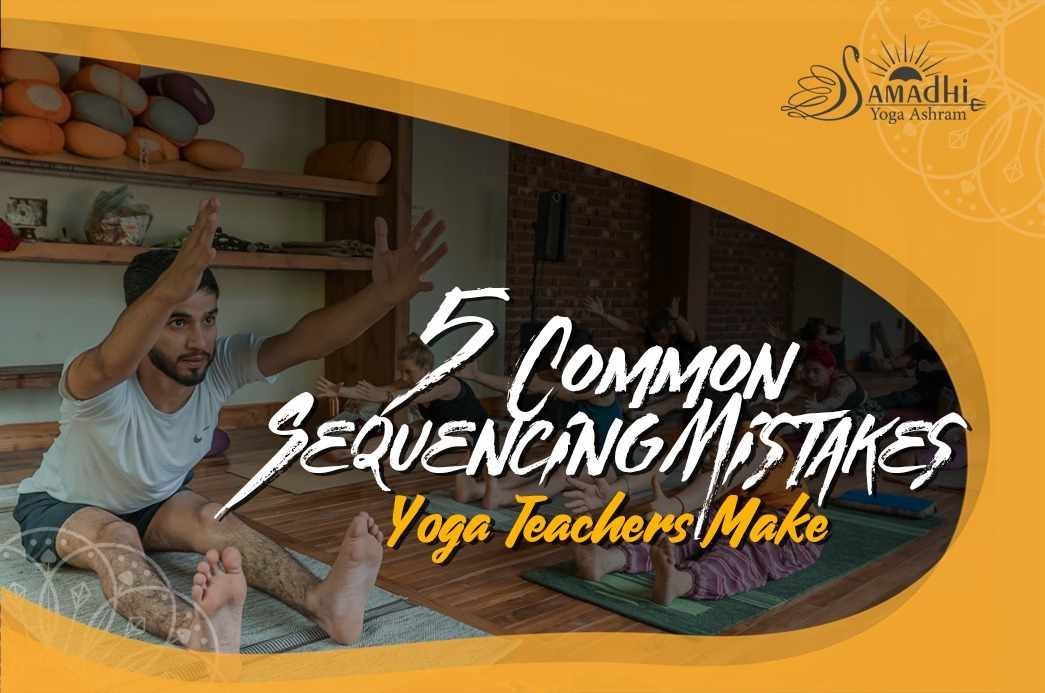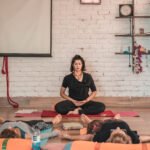Yoga teachers often a unique approach to teach yoga, to a wide genre of students. One approach that works for a set of students, may not work for another. Moreover, a beginner teacher also has to face numerous problems while teaching classes of various interests and age groups. So, planning for a yoga class, is absolutely essential today. There is a lot to keep in mind, than just the yoga theme or pose. Additionally, as a teacher, you have to give the right amount of time for each pose. A well-rounded practice can create the balance, everyone desires in their lives.
If you are planning to take your first class, or have already taken many, the time has come to give a rejig to the sessions. Many professional teachers, who have been teaching for a long time also make certain sequencing errors. If you rectify these errors, it will be easy to deliver what the students look for.

Common Sequencing Errors
- Starting with Static Poses
When a student shows interest in your yoga class, it may be due to a number of reasons. The first reason, is the student’s willingness for movement. Most people have the expectation, that a yoga class must have postures and lots of movement. It might be necessary to practice a few static poses, but flow is absolutely essential thereafter. If you start with static poses, you are actually restricting the movement of the individual. Moreover, the body is not getting warmed up. And, secondly, the students might get bored. You can start the pose, with gentle movements. Such poses will give your muscles some energy to continue and also will lend the fun factor to the workout. You can save the stillness for the later sessions.
- Starting with Complicated Poses
Another practice that you, as a teacher need to guard against, is not to start with complicated poses. It can be detrimental to the overall flow of the class. Some active students may be able to grasp the same, whereas, others may not. If you give your students difficult poses in the beginning, they will not feel comfortable. Instead, they will focus on you, and your movements. It can be a bit unsettling, with the ones who are not too familiar with yoga. Choose more simple poses for beginners as well in the initial sessions. It will create a huge interest in the minds of the learners. Moreover, you can also ask your students to start with focus on breathing patterns. This practice should click with most.
- Breaking Rules
This is an absolute No-No. You, as a yoga teacher cannot afford to make this mistake. In a 200-hour Yoga TTC session, there is a set curriculum. Moreover, it is for a reason. So, you cannot afford to break away from it. Some teachers may be more inclined to create their own style, but you should leave that for more seasoned practitioners or for later classes. Sometimes, it might be necessary to just go with the flow. Moreover, you should avoid trial and error. If you still wish to go ahead with changing the rules of the game, think and plan first. Why do you think, you are skipping one component? Is your personal addition and deletion affecting the students? Do you really feel, that the changes will lead to a better physical and spiritual journey for your students? It is true that adding personal touches to the way you teach, or your teaching pedagogy, can make a lot of difference, as there are numerous teachers in the market already. So, that extra something can always get you more students. You can try to incorporate small changes and one by one. Do not force it on the students in one go, as it can have a devastating effect.

- Teaching Forward Folds (Especially seated ones)
Many yoga practitioners have the belief, that a seated forward fold pose can help in the opening of hamstrings. Moreover, it can also help a practitioner to open up. However, in reality, it is not so. In order to do this pose, as in Paschimottasana, you need to have already stretched and relaxed hamstring muscles. Then only, you can do the seater forward fold comfortably. If your students are not warmed up, they may not be able to perform the pose to the best of their abilities. After you have taken your students through some warm-up exercises, and when they have already freed their body parts, you can move on to the next.

- Not Getting Savasana Right
One of the biggest challenges for any yoga teacher, is getting the timing right. Most classes do not go as planned. Some problem or the other arises. Few students may need more help from you. A student may also develop an injury. The main problem arises, when you are unable to take your students through the journey, till the savasana. You have to slow down the movements, so that the students get relaxed, but not in a hurry. The build-up to savasana is absolutely essential.

It is one of the easiest to look at, but the most difficult part of your yogic practice. It relaxes both the mind and body. If you are forceful, and your students are not yet relaxed, they will not be able to reap the benefits of the asana. You should plan the asanas properly serially, so that the savasana pose is easier to reach. If you have extra time in hand, you can always increase repetitions or just add one or two more poses.
So, now you must have understood that conducting a yoga class is challenging. You just cannot go according to your whims and fancies. You have to respect the student’s time, comfort levels, and shortfalls. Then only, you can take the students through the practice, in which they can reap the benefits of the yoga poses. When you create the sequences mindfully, keeping in mind the physical, spiritual and energetic consequences, you can deliver a great class.








